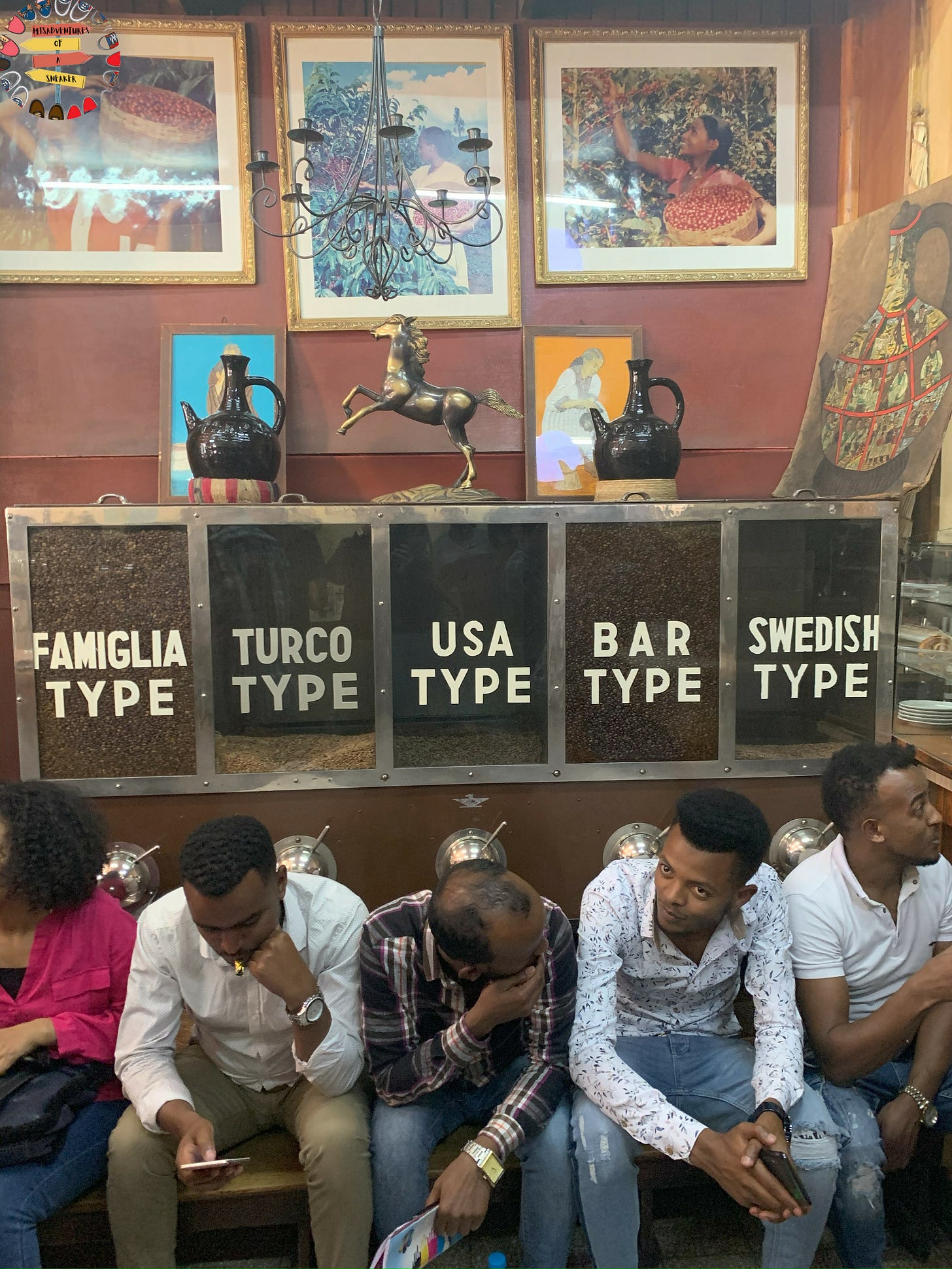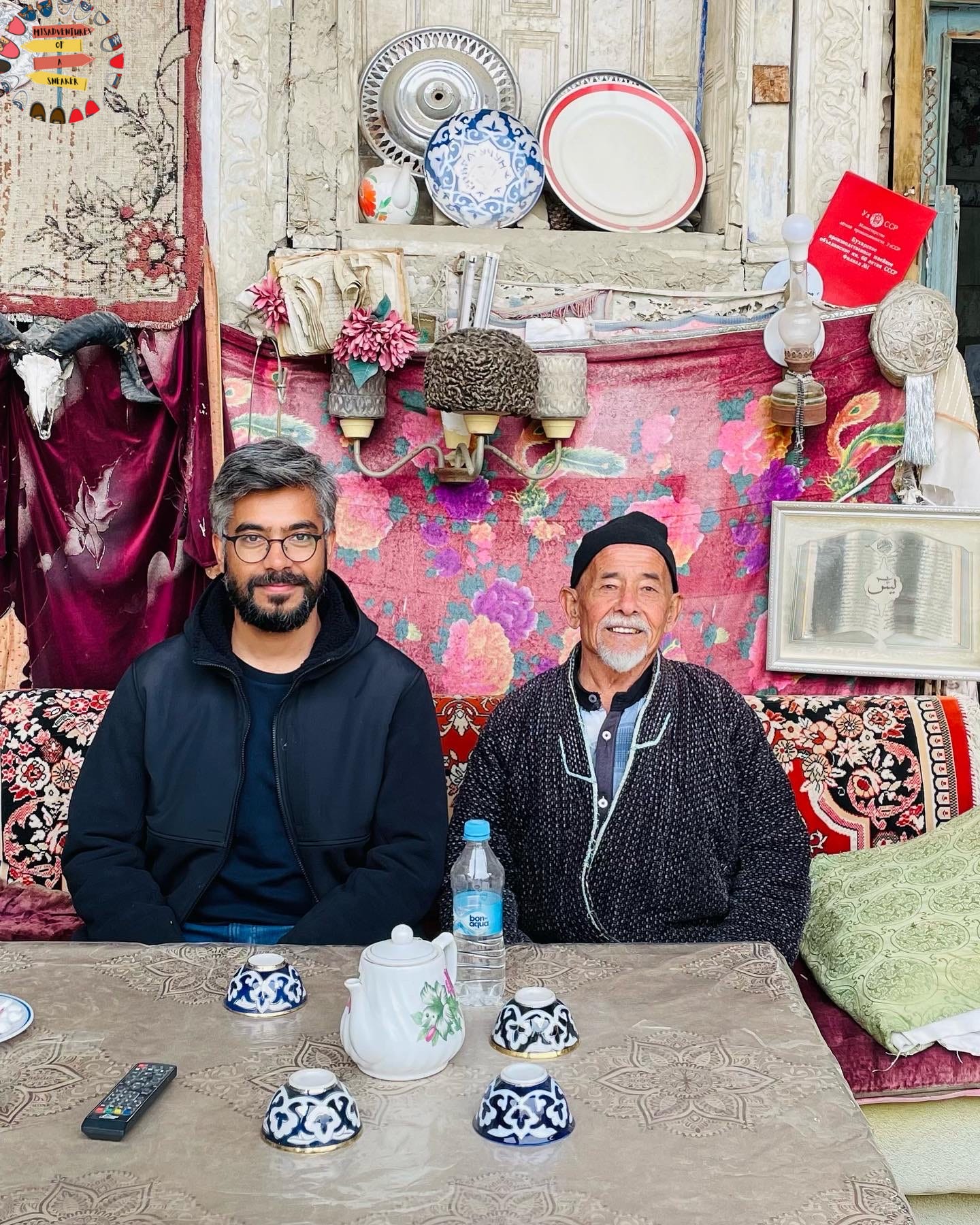The World in a Cup: Coffee Traditions Across Cultures
Exploring some coffee rituals across the world
Introducing our new Travel Jounal - a perfect travel companion!
When our team first sat down to discuss what we wanted to come out of this journal - our unanimous choice was to create a keepsake that turns travel adventures into stories. Timeless stories that one would like to revisit and reminisce.
This journal is meant to be a space where each of us - adult or child - can individually document the magic of each holiday.
At exciting pre-launch prices now!
I'm not a foodie—actually, scratch that, I'm a notoriously picky eater. No one likes inviting me over because feeding me is never a satisfying experience for them. But coffee? That’s a different story. The ten minutes I spend making and drinking my coffee are, without fail, my favorite part of the day—even when I wake up on the wrong side of the bed. Whether I’m beating instant coffee into a frothy delight or carefully using a traditional Indian filter, the whole ritual of brewing and savoring my coffee somehow calms my heart while making my brain hyper-focused for the day ahead.
In our latest podcast episode, Revati spoke to Mr. Suhail Khan—a traveler, a foodie, and someone whose adventures revolve around tasting and experiencing the local cuisine of every place he visits. Street food stalls, home-cooked meals, Michelin-starred restaurants—he tries it all. But for him, it’s never just about the flavors; it’s about the history, the rituals, and the culture behind every dish. While my non-foodie self has never been that invested in food, I swear I could feel my taste buds tingle every time he shared stories about the traditions woven into every bite.
Now, imagine my excitement when he started talking about coffee. If I’m an amateur coffee enthusiast, Suhail is a full-blown coffee scholar. On weekdays, he keeps it simple with ground beans and a moka pot. But come the weekend? He’s meticulously grinding beans, timing the brew to perfection, and treating coffee-making like an ancient ritual. His friends don’t even bother asking what souvenirs he wants anymore—they just bring him coffee from wherever they traveled. His collection at home? He could probably open a specialty café with the variety he has.
When Suhail started sharing the coffee traditions he’s come across, I knew I had to write this blog. Right after finishing my own cup, of course.
Ethiopian Coffee: Where It All Began
If you’re a coffee lover, Ethiopian coffee is a must-try. After all, this is where coffee was first discovered! Unlike other coffee-growing countries, coffee trees grow naturally in Ethiopia’s high-altitude, acidic soil—ideal conditions for some of the world’s most unique coffee flavors. According to UNESCO, Ethiopia is home to around 5,000 wild Arabica coffee varieties!
Now, I was ready to dive deep into Ethiopia’s coffee legacy, but first—I have to share the legend.
The Tale of Kaldi and His Hyperactive Goats
In the Ethiopian highlands, a goat herder named Kaldi noticed his goats acting... weird. They were jumping, dancing, bleating excitedly. Not their usual vibe. The culprit? Some bright red berries growing on a nearby shrub. Curious, Kaldi tried them himself and instantly felt a rush of energy.
Excited by his discovery, he rushed home to tell his wife, who called the berries ‘heaven-sent’ and urged him to share them with the local monks.
Big mistake. The monks weren’t impressed. One called them ‘the Devil’s work’ and threw them into the fire. But as the beans roasted, a rich, intoxicating aroma filled the air. Intrigued, the monks fished the beans out, ground them up, and brewed them into the world’s first cup of coffee.
After experiencing its effects, they were hooked. Soon, coffee became their go-to aid for staying awake during long prayers.
From Chewing to Brewing
While this story dates back to the 9th century, historians believe Ethiopians had been consuming coffee for centuries before that—just in a different form. Instead of drinking it, they ground coffee beans, mixed them with ghee or animal fat, and rolled them into energy-packed balls. (I wonder if that’d taste like our coffee bite candies)
By the 17th century, Ethiopian coffee started making its way around the world, but today, it’s still at the heart of Ethiopian life—both culturally and economically. Around 15 million Ethiopians work in the coffee industry, and coffee accounts for nearly 70% of the country’s export earnings.
The Ethiopian Coffee Ceremony: ‘Buna Tetu’
But here’s what fascinated me most—coffee in Ethiopia isn’t just a drink; it’s a way of life.
‘Buna tetu,’ which means ‘come drink coffee,’ is more than an invitation—it’s a ritual. Some people add sugar, honey, salt, or even butter, but one thing remains the same—coffee is never drunk alone.
A traditional Ethiopian coffee ceremony begins with igniting aromatic incense on a hot coal. The fragrant smoke is believed to carry away any bad spirits, setting the stage for a time of deep conversation and connection. As the rich aroma of coffee and incense fills the air, the jebena (a traditional clay coffee pot) is refilled through three rounds:
Abol – the first cup, strong and bold.
Tona – the second cup, slightly milder.
Bereka – the final cup, smooth and lingering.
Guests are expected to drink all three cups—it’s considered impolite to leave before finishing them. Ethiopians believe that by completing all three rounds, your spirit is transformed. Of course, if you want more, you’re free to keep sipping.
In Ethiopia, there’s even a saying: ‘Buna dabo naw’—Coffee is our bread.
Suhail’s Ethiopian Coffee Experience
When Suhail visited Addis Ababa, he saw this culture firsthand. Even in big restaurants, there were separate coffee counters where locals brewed coffee over charcoal, dressed in traditional attire. No matter where you went, you’d find people from all walks of life sipping coffee together, deep in conversation—just like we do with chai back home.
One spot that left a lasting impression on him was Tomoca Coffee. Established in 1953, it’s one of Ethiopia’s oldest and most iconic coffee houses. Even Emperor Haile Selassie used to grab his coffee there! It’s a no-frills place—just order your coffee, drink, and go. (Suhail compared it to our Udupi restaurants—efficient and no time wasted.)
That one cup of coffee hooked him for life. He stocked up on Ethiopian beans, and those kept him going all through the lockdown.
So take Suhail’s words: if you’re ever in Ethiopia, skip the souvenirs—just bring back coffee.
Yemen’s Coffee Tales
For centuries, Ethiopia and Yemen have debated who first brewed coffee. Yemen, too, has its own origin stories—one tracing it back to Ethiopia, another claiming it as its own.
One legend follows Sufi mystic Ghothul Akbar Nooruddin Abu al-Hasan al-Shadhili, who, while traveling in Ethiopia, noticed energetic birds feeding on coffee cherries. Curious, he tried them himself and felt instantly revived.
Another tale speaks of Sheikh Omar, a healer from Mocha, exiled to a desert cave. On the brink of starvation, he discovered coffee cherries but found them too bitter to eat. Roasting only hardened them, so he boiled them instead, creating a rich, aromatic brew. When his exile ended, he returned home with coffee, hailed as a miracle drink.
By the 15th century, Sufi monks in Yemen were already using coffee to fuel long nights of devotion. The famous ‘mocha’ actually refers to the Yemeni port of Mocha, and I always thought 'Mocha' was just a fancy chocolate-flavored coffee!
Kisher: Yemen’s Hidden Gem
Beyond coffee, Yemenis cherish kisher, a centuries-old brew made from dried coffee husks. Unlike the bold bitterness of coffee, kisher is light, subtly spiced, and soothing—more like tea than coffee, yet still carrying the essence of the bean. Traditionally, it’s brewed with cinnamon, ginger, or nutmeg, filling homes and cafés with a warm, fragrant aroma.
In the old quarters of Sana’a, men gather in the afternoon, unhurried, sipping kisher as conversations flow. Inside Yemeni households, kisher is poured in delicate cups, its deep amber hue glowing under the soft light. Generations have passed it down as a ritual, a quiet pause in the day where elders and young ones alike sit together, hands wrapped around steaming cups.
Beyond its cultural charm, kisher is also known for its health benefits. It’s packed with antioxidants, easy on the stomach, and even considered a natural digestive aid. It carries less caffeine than coffee, making it a gentle, everyday drink that lingers on the palate with just a whisper of spice.
Türkiye: The Coffee That Took Over an Empire
Despite its name, Turkish coffee actually comes from Yemen.
Back in the 16th century, coffee made its way to the Ottoman court, where Sultan Suleiman I fell in love with it. So much so that even his harem was taught how to brew it. What started as a drink for the elite soon spilled into everyday homes, and by the mid-1550s, coffeehouses were everywhere—early versions of today’s cafés, buzzing with conversations and endless refills.
Brewing Magic in the Sand
Turkish coffee isn’t just made—it’s crafted. Suhail shared a method where coffee is brewed in a cezve (a small pot with a long handle) and stirred continuously over hot sand. No filters, no fancy machines. Just finely ground coffee, water, and sugar, slowly heated until a rich foam rises to the top. That foam? It’s the sign of a well-made Turkish coffee. The drink is served in a fincan (tiny cup) alongside a glass of water and a piece of Turkish delight.
The experience, though, is divisive. Smooth coffee lovers might struggle with the fine coffee grounds that settle at the bottom. You don’t drink that last sip—you just know when to stop. It’s bold, earthy, and unapologetically strong.
Fortune in a Cup
Now, here’s where things get interesting. Ever heard of tasseography? It’s fortune-telling using coffee residue. Once you finish your coffee, you flip the cup onto the saucer and wait. The patterns left behind supposedly reveal secrets about your future. Just hand it to the person who brewed your coffee, and boom—instant Professor Trelawney moment.
And if you thought coffee was just for sipping, think again. In Türkiye, a marriage proposal isn’t complete without a coffee test. When the groom-to-be visits his future in-laws, the bride serves him Turkish coffee—sometimes with salt instead of sugar. If he drinks it without flinching, it’s a sign he’s patient and good-tempered. If he makes a face? Well… maybe it’s time to rethink things.
From Ethiopian buna to Yemeni kisher and Turkish coffee readings, one thing is clear—coffee is more than just a drink. It’s a ritual, a shared experience, a bridge between people. Whether it’s a slow ceremony or a quick espresso shot, every sip carries a story.
In this episode with Suhail, we explored not just coffee rituals but also the wider world of food traditions. After all, food and beverages are such a huge part of any travel experience, and our conversation really drove that point home. From biryanis to dumplings, from breads to (very close to my heart) coffees of the world, this episode sent me down some truly fascinating rabbit holes.
Now, I can’t wait for another episode of Misadventures of a Sneaker that focuses entirely on coffee—Suhail, are you listening? ;)
Because for me, coffee isn’t just the best way to start my day—it’s what keeps me going!
Do you know of any fascinating coffee traditions from around the world? Drop them in the comments—we’d love to hear!











